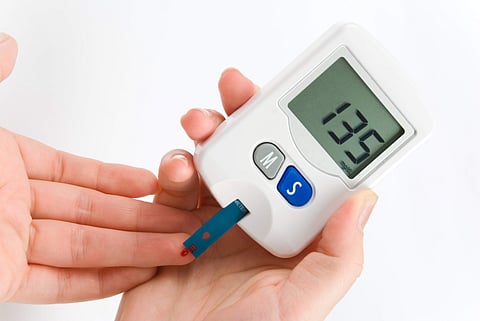

NEW DELHI: The darkening and thickening of skin over the neck can be an indicator of liver damage among patients with type-2 diabetes, a new study has found. According to the researchers of the study conducted jointly by the AIIMS, the National National Diabetes Obesity and Cholesterol Foundation, and Fortis Hospital, the finding is significant as it can be used as an easy-to-identify clinical marker and will enable even non-medical persons to be alert about liver damage.
In clinical terminology, this condition is called Acanthosis Nigricans that causes dark, velvety patches of skin in body creases and folds, such as the neck, armpits, groin, face, chest, elbows, knees, and knuckles. Generally liver damage is a condition that progresses gradually and is diagnosed in later stages.
“Assessment of Acanthosis Nigricans among Asian Indians is of importance due to the relatively high magnitude of insulin resistance and early onset of type-2 diabetes, contributed by major changes in dietary and lifestyle practices. There is strong correlation of the skin issue with type-2 diabetes, particularly in women, overweight, obese individuals and those with a family history of type-2 diabetes. In this study, the correlation with severity of neck Acanthosis Nigricans was strongest, with fasting insulin and glucose levels, and insulin resistance as compared to the disease at other sites, that is, axilla, and knuckles,” the study findings read.
“Acanthosis Nigricans, among Indians, can be indicative of high risk of liver cell damage (fibrosis) in people with type 2 diabetes. Characterized by thickening, dark pigmentation, and velvety appearance of the skin, it is typically observed at the nape of the neck. However, it can also manifest in other areas such as the axillae, elbows, knees, and groin. This is usually found in individuals with insulin resistance. Once seen, a non-medical person can easily recognize it too,” a researchers’ note read.
Dr Anoop Misra from Fortis C-Doc Hospital, co-author of the study, said the findings introduce a new and easy-to-identify clinical marker for assessing liver health in patients with type-2 diabetes who remain of developing liver disorders.
“We made important observations indicating an association between the presence of Acanthosis Nigricans and hepatic steatosis and fibrosis (adverse markers of liver damage). Importantly, our study provides novel data on Acanthosis Nigricans as a clinical marker in relation to liver fat and stiffness, as no prior studies have reported such findings,” he added.
Early signs
Acanthosis Nigricans can be indicative of high risk of liver cell damage (fibrosis) in people with type-2 diabetes. Characterized by thickening, dark pigmentation, and velvety appearance of the skin, it is typically observed at the nape of the neck. It can also manifest in other areas such as the elbows, knees, and groin. This is usually found in individuals with insulin resistance.